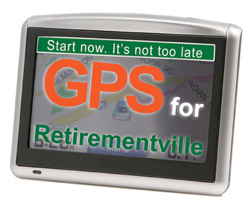
It’s been called the largest wealth transfer in human history, and with good reason—some 76 million baby boomers will retire and dispose of an estimated $40.6 trillion in wealth and property over the coming decades. Much of that unprecedented figure will involved the sale or gifting to successors of small and midsized businesses like yours. If you’re like many owners, you may want to hand off the legacy to a family member as a gift, or sell it for a price that fairly reflects your considerable investment of time, money and sweat equity.
Unfortunately, because of insufficient exit-strategy planning, some of those trillions of dollars will not go to chosen successors, pay for ocean cruises or cover topnotch health care during the golden years. Instead, the lack of a sound exit strategy will result in the diversion of substantial sums to profit-takers and tax collectors.
Chances are good that as a business owner, you’ll need to grapple with these issues sooner rather than later. How much sooner depends, in part, on when you were born. By definition, anyone who started life between 1946 and 1964 is a part of the baby boom—and this population has chosen 64 as the optimal age to retire, according to a recent survey.
That marks 2010 as the beginning of the retirement wave, at least for those who feel age 64 is the ideal time to begin what some have called “life after work.” But whether you’re on the leading edge of the baby boom curve or the tail end, this is definitely not your father’s environment for retirement.
First of all, people live longer these days. In practical terms, you’ll need more money to cover the costs of your extended lifespan; and since your most valuable single asset is likely to be your business, it’s vital for you to manage that asset in a way that yields maximum value over the greatest period of time.
So what is an “exit strategy,” anyway, and when should you start thinking about yours?
Experience shows that the best day for owners to start planning their business exit is the day they open their companies’ doors.
As the busy owner of a small or midsized company, you probably already have your hands full putting out fires, solving problems and dealing with fast-shifting economic conditions. All these things are challenging enough without having to worry about the details of “ownership transfer” and “succession planning.” Yet it’s precisely those details—or the lack of them—that spell the success or failure of most owners’ attempts to hand off their business legacy to chosen successors. With that in mind, there’s no time like the present to get back to the basics of exit strategy planning.
An important benefit of the corporate organizational structure is the variety of succession paths from which to choose. Owners can hand off the legacy via gifting or sale to family members, sale to a third-party investor, a partner buyout or an Employee Stock Ownership Plan (ESOP).
When considering your own strategy for exiting the business, you may want to imagine how old you’d like to be when you enter retirement. Next, picture who you’d like to carry on the tradition that you’ve built with your company.
Now that you’ve worked out a tentative year and a likely successor, it may be prudent to consider ways to protect your interests if you share ownership with a partner. When partners share ownership, it’s imperative to draw up a buy-sell agreement, whether or not the additional shareholder plays an active role in company operations.
The purpose of such agreements is to protect shareholder interests by specifying divestiture strategies to be used when unforeseen events, such as disability or death, bring sudden change to a company’s ownership configuration. Buy-sell agreements can ensure that daily operations continue uninterrupted, even when shareholders must divest due to circumstances outside their control.
Business owners who wish to transfer their shares to a family member should consider an installment sale. Paying on installment commits the buyer to making a fixed number of payments at specific interest rates. Sellers who choose this mechanism not only receive more income upfront, but also defer their total tax liability for the duration of the payment plan.
Sometimes, the best move for a business owner is a sale to an outside buyer (also called a third-party investor). Those who sell to a third party would be wise to consider making themselves available in an ongoing capacity as consultants to their former companies after retirement. This type of arrangement is called an availability-to-consult clause. Invoking such a clause enables retiring shareholders to pay no employment taxes for a stipulated period.
There’s an even better way to safeguard your business legacy and ensure a seamless ownership transition: by turning to a consulting team with deep experience maximizing corporate value and personal wealth for owners of small and midsized businesses across North America.
GPS is such a team. The exit-strategy planning unit at GPS can analyze your needs and create a comprehensive, customized plan for increasing your company’s market value while maximizing your net worth— your Exit Strategy Plan, or ESP.
Your ESP consists of a five-year Business Exit Strategy that’s paired with a Wealth Management program. The Business Exit Strategy is designed to boost profits and raise a company’s market value. Wealth Management consists of customized exit strategies for maximizing personal returns on money, time and sweat equity invested in a business.
Together, both components help find answers to questions asked by all the business owners who’ve ever wondered if they’ll have enough money to live the retirement lifestyle of their dreams.





For more information on ESOPs, the nonprofit National Center for Employee Ownership has a publication titled Selling to an ESOP (http://www.nceo.org/Selling-ESOP/pub.php/id/31/) and for sales directly to individual employees an detailed issue brief, http://www.nceo.org/Selling-Company-Directly-Employees/pub.php/id/394/.